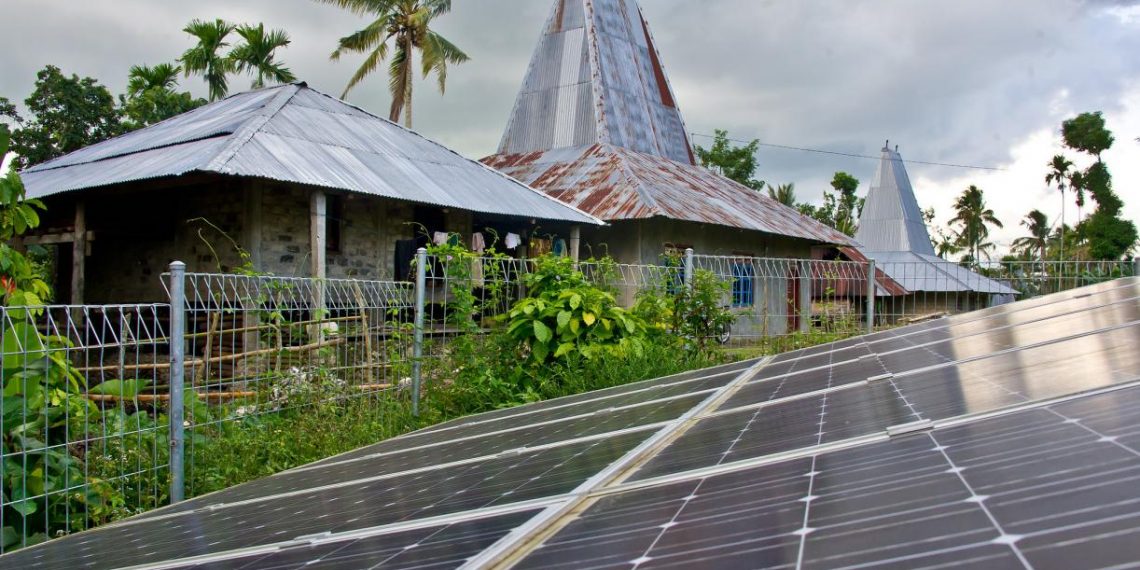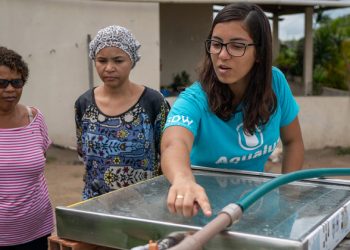Indonesia has made strong progress on identifying how it can transition toward a low-carbon and resilient economy to showcase to its international counterparts ahead of COP26 in Glasgow in November. Although efforts thus far are not yet enough, there is still a chance to step up ambition in a way that will be good for Indonesia and its people.
In July this year, the Ministry of Forestry and Environment submitted Indonesia’s second climate action plan (or Nationally Determined Contribution, NDC) to the United Nations Framework Convention on Climate Change. The NDC included a long-term strategy that targeted net-zero emissions by 2060 or earlier, and while it did not enhance mitigation goals, it did outline measures for adaptation.
A month earlier, Indonesia abruptly ended its $1 billion forest and climate partnership with Norway, while its moratorium on palm oil concessions, first introduced in 2018, expired without plans for a replacement, sending mixed signals of Indonesia’s commitment to tackle the climate crisis.
However, there are some favorable signals — In May 2021, state-owned utility Perusahaan Listrik Negara (PLN) also announced it would phase out coal, helping pave the way for renewable energy. More importantly, following a trial for an emissions trading system for coal-fired power plants, a carbon market in Indonesia appears to be emerging.
The government recently passed a new bill to reform tax structures in an attempt to reduce the budget deficit the country took on to combat the impacts of COVID-19. These reforms include plans for a carbon tax to be placed exclusively on coal-fired power plants, reportedly to be set at a minimum of Rp. 30 per kgCO2e, or $2.10 per ton of carbon dioxide equivalent (tCO2e) starting April next year.
This is an important start, but considerably lower than the carbon taxes set by other countries such as Canada, which imposed $20 per tCO2e in 2019 and has announced a pathway to reach carbon prices of $136 by 2030, and much lower than what is needed to transition to a low-carbon economy. But it is somewhat on par with the initial price set by fellow Asian nation Singapore in 2019 ($3.69 per tCO2e).
These actions could help Indonesia reach its target of net-zero emissions by 2060 or earlier as outlined in its updated climate action plan and Long-Term Strategy. But if the country wants to become a “carbon superpower” while at the same time achieving its vision in 2045 to become high-income country, it needs to do better.
New analysis from the Ministry of National Development Planning’s Low Carbon Development Initiative (LCDI) shows that “better” is within reach. The report’s scenarios demonstrate that achieving net-zero emissions as early as 2045 will not only deliver the most beneficial outcome for Indonesia’s people and economy, but is also entirely within reach.
Myriad Social and Economic Benefits for Reaching Net-zero
A net-zero economy would see higher GDP growth rates for Indonesia — ranging from an average of 6.1-6.5% per year from 2021-2050 — and higher average per capita income. This would help Indonesia break become a high-income country by 2045, under the World Bank’s threshold. It would also deliver more jobs, from the very first year, and better health outcomes for Indonesians than the current pathway.
Transforming Indonesia’s economy to achieve net-zero means going beyond the green measures that are already underway and fully embracing a substantive low-carbon policy agenda, including system-changing green interventions in key economic systems. This will require shifts in existing investments as well as new financing. Investments and projects that encourage sustainable agriculture, food loss and waste reduction, the conservation and restoration of natural resources, renewable energy advancement, and energy efficiency will need to be significantly scaled up.
For example, Indonesia has significant renewable energy potential, but very little of it is being used. Almost half this capacity is solar, and over a fifth is hydropower. Indonesia has some of the largest geothermal potential in the world, estimated at 40% of global reserves.
Such investments in clean energy and sustainable alternatives would not only drive employment, but also make Indonesia more resilient to the potentially devastating impacts of climate change. As Indonesia’s vast natural systems become restored, ecosystem services — from water supply to fire prevention — are expected to reach a value of $4.75 trillion per year by 2060.
A reduction in polluting energy and transport systems would clean up air quality, which has been a major public health concern in Indonesia, to the point that the government has been found guilty of negligence in a civil lawsuit.
The Low-Carbon Path Forward
Even amid a global pandemic and economic crisis, Indonesia has the capacity to embrace net-zero emissions by mid-century. And it would not be alone on this; on the contrary, many countries, companies, and financial institutions are also adopting net-zero targets by around mid-century, and some even earlier, recognizing that ambitious climate action can deliver better and stronger growth. As of October 2021, 66 countries accounting for 56.5% of global emissions have communicated a net zero target. These climate leaders, especially other emerging economies like Indonesia, stand to benefit from net zero interventions in similar ways.
But the future that these net-zero scenarios from the Ministry of National Development Planning envision for Indonesia’s economy would require an investment of around $20 billion per year in 2021–2022 and average $150-200 billion per year in 2021–2030, according to the LCDI analysis. One approach to help with financing this transition would be through channeling the revenue gained from the combination of a carbon tax system and the elimination of fossil fuel subsidies — estimated to reach $168-215 billion by 2031 — toward funding low carbon initiatives. The revenues should also be allocated for social protection programs and green infrastructure to secure the co-benefits for a more just transition.
The $2.10 per tCO2e tariff Indonesia intends to apply to coal-fired power in April is a promising start, and can help raise much needed revenues, but the country should consider increasing it significantly and expanding its scope over the next few years to give the government more and better capacity to build Indonesia back better.
Scaling up international finance — whether through foreign aid grants and enabling opportunities for capital inflow — will also be crucial to ramp up Indonesia’s ambition. Luckily, the country has abundant natural capital and a lucrative business environment that will help it attract necessary financing. Indonesia will also need to work closely with existing development partners and seek out new multilateral relationships to realign finance flows to advance the net-zero agenda.
Jumpstarting a Greener, more Resilient Future
The government can start realizing these benefits — with significant stimulus effects and job creation — in the first year by implementing net-zero measures as part of its COVID-19 recovery. Many countries are also taking the unprecedented opportunity of the pandemic to jumpstart a greener future without sacrificing recovery. An IFC study found that in 21 emerging markets, including Indonesia, green recovery has the potential to generate $10.2 trillion in investment opportunities and 213 million jobs while also reducing emissions by 4 billion tCO2e by 2030 — a hundredth of the remaining carbon budget to keep global temperatures below 1.5℃ estimated by the IPCC in their latest report.
By implementing bold net-zero policies, Indonesia would secure its role as a “carbon superpower”, one that garners respect among the international community. But more importantly, taking more ambitious action will enable the Indonesian people to build back stronger toward a brighter, healthier, and more prosperous future.
For more information, see A Green Economy for a Net-Zero Future: How Indonesia can build back better after COVID-19 with the Low Carbon Development Initiative (LCDI).



